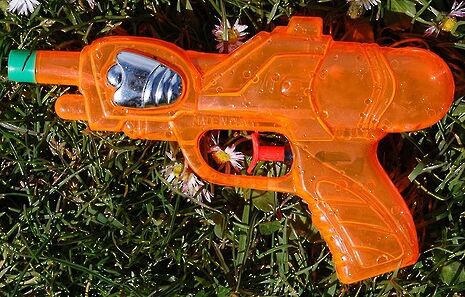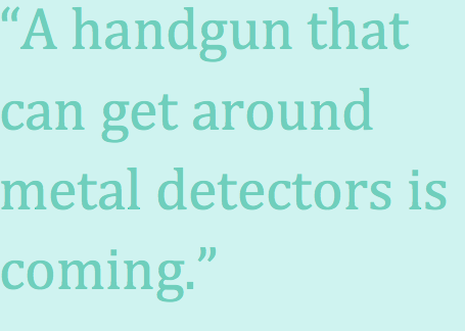Guns don’t kill people, printers do
As the world’s first plastic gun, ‘The Liberator’, hits the internet Richard Nicholl explores the latest threat posed by America’s love affair with firearms
What was the first thing you ever printed? Probably a picture you drew on Paint, or a piece of text on Word. Mine was a note saying “I love you mummy”, printed from my beaming father’s work computer when I was about six. Now we have the technology to print objects of plastic and metal, not just images. What would you pick first? A sculpture? A component? A gun?
There’s a paranoid mindset on the American right that sees the ownership of a gun as being instrumental to one’s liberty against a despotic government. It was this that defeated modest gun control proposals in the Senate, at a time when more people die at the end of a gun every single day in America than in a whole year in the UK.

That was bad enough, but now the radical Texan group Defense Distributed has developed a fully operational, unregulated handgun that one can print in a few hours at one’s desk. Some months ago, the same group printed the lower receiver, the controlled and regulated “engine”, of an AR-15 assault rifle – the same gun used to slaughter twenty young children in Newtown, Connecticut in December – and used it to fire several rounds on video. “Wither gun control,” said that press release. They call their new, wholly printed weapon the Liberator, and the blueprints have been downloaded hundreds of thousands of times, free of charge. The State Department has ordered Defense Distributed to take them down, as they appear to be in breach of firearm export laws, but the plans are circulating on the internet and cannot be recalled. The genie is well and truly out of the bottle.
To a British audience unused to firearms, watching hopelessly from across the Atlantic as America’s gun fetish grows ever more bizarre and desperate, this seems absurd. For us, guns are alien and frightening, but the US has nearly as many guns as it does people. 3D printing – conceived as a way of bringing bespoke production to the masses – turned out to be an ingenious way of circumventing America’s feeble gun regulations so they can have some more. There is only one metal part in the Liberator, the firing pin, which can be substituted with a simple, concealable nail from a hardware store. A handgun that can get around metal detectors is coming.

There is still reason to be somewhat optimistic. It is not a major threat to British safety as not only guns but ammunition is tightly controlled here; gunpowder is unprintable. The Liberator is not a very good gun, either: it is inaccurate, and like the modified AR-15, falls apart after a few shots. The technology will only improve, however, and as 3D printing becomes steadily more economical and advanced, a home-printed gun will one day be just as lethal as a Glock or a Browning, and significantly cheaper.
America’s political paralysis on guns, more profound than on any other issue, stops it from doing anything at the federal level to control this unsettling trend. If they cannot even pass a law requiring all gun sellers to conduct a background check to ensure the buyer is not a criminal or mentally ill, what hope is there of stemming the flow of cheap bullets to fill an arsenal of Liberators?
3D printing is a technology with enormous potential for the world, and great advances will be made with it. We see its great good but American politicians are blind, wilfully or otherwise, to its terrible dangers. The wheel will turn until another maniac walks into a school, or office, or airport, with 3D-printed weapons instead of factory-produced ones, and it will keep turning. No matter how many die, nothing is ever done to stop it.
 News / Eight Cambridge researchers awarded €17m in ERC research grants27 December 2025
News / Eight Cambridge researchers awarded €17m in ERC research grants27 December 2025 News / Downing investigates ‘mysterious’ underground burial vault 29 December 2025
News / Downing investigates ‘mysterious’ underground burial vault 29 December 2025 Lifestyle / Ask Auntie Alice29 December 2025
Lifestyle / Ask Auntie Alice29 December 2025 Sport / Hard work, heartbreak and hope: international gymnast Maddie Marshall’s journey 29 December 2025
Sport / Hard work, heartbreak and hope: international gymnast Maddie Marshall’s journey 29 December 2025 Interviews / Meet Juan Michel, Cambridge’s multilingual musician29 December 2025
Interviews / Meet Juan Michel, Cambridge’s multilingual musician29 December 2025








